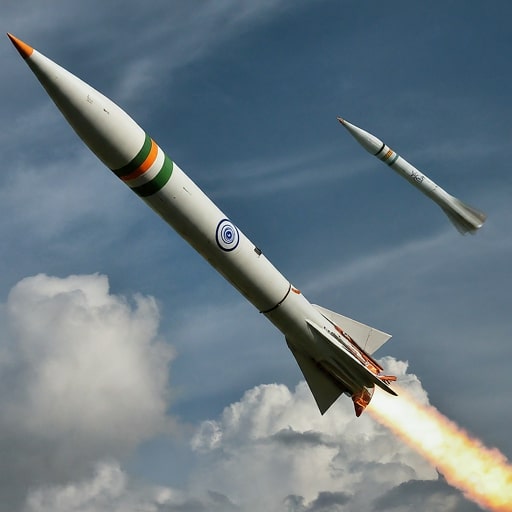- Views: 2K
- Replies: 9

India is taking significant steps to reinforce its strategic capabilities with the development of advanced missile technology. Here's how the nation is strengthening its nuclear deterrence posture.
The K-5: India's Extended Reach Missile
The Defence Research and Development Organisation (DRDO) is currently developing the potent K-5 submarine-launched ballistic missile (SLBM).This missile's impressive 5,000-kilometer range will fundamentally increase the reach and survivability of India's ballistic missile submarines (SSBNs).
This allows Indian submarines to launch nuclear strikes from further distances, decreasing their vulnerability to interception.
MIRV Technology - Multiplying the Challenge
A critical feature of the K-5 is the incorporation of Multiple Independent Re-entry Vehicle (MIRV) technology. This capability enables a single missile to deliver multiple nuclear warheads to separate targets.By overwhelming missile defence systems, MIRV technology dramatically enhances the likelihood of successful penetration.
Bolstering the Nuclear Triad on the S4
Designed for integration with India's new S4 class of nuclear submarines, the K-5 strengthens the nation's nuclear triad. This triad – the ability to launch nuclear weapons from land, air, and sea – greatly increases the credibility and survivability of India's nuclear arsenal.Deterrence and Second-Strike Capability
India's efforts to develop MIRV technology are framed as a defensive necessity within its "no first use" nuclear doctrine. With MIRVs, India reinforces its ability to inflict a substantial level of damage, even after absorbing an initial attack.This second-strike capability strengthens deterrence and underscores the principles of Mutually Assured Destruction (MAD), aiming to discourage aggression from potential adversaries.
Addressing Strategic Concerns
With the K-4 SLBM capable of reaching into southern China, the K-5 further addresses a strategic need. Its extended range allows Indian SSBNs to target significant assets deep within China's mainland while operating farther from Chinese surveillance and defence systems. This offers greater survivability and flexibility in nuclear strike scenarios.Conclusion
India's development of the K-5 SLBM and MIRV technology is a calculated move to strengthen its nuclear deterrent in a complex security environment.This modernization effort reinforces India's commitment to credible second-strike capability, ensuring survivability and making aggression a less attractive option for potential adversaries.



